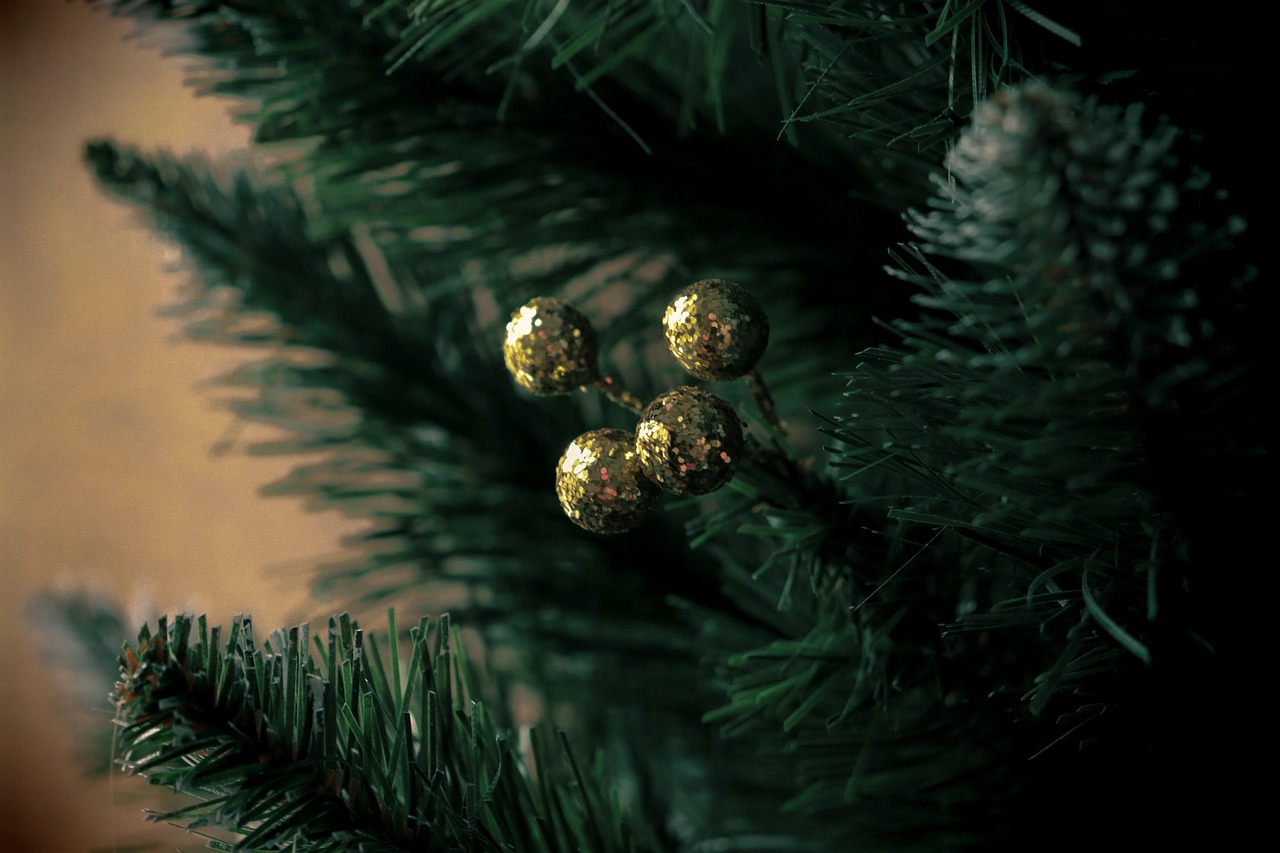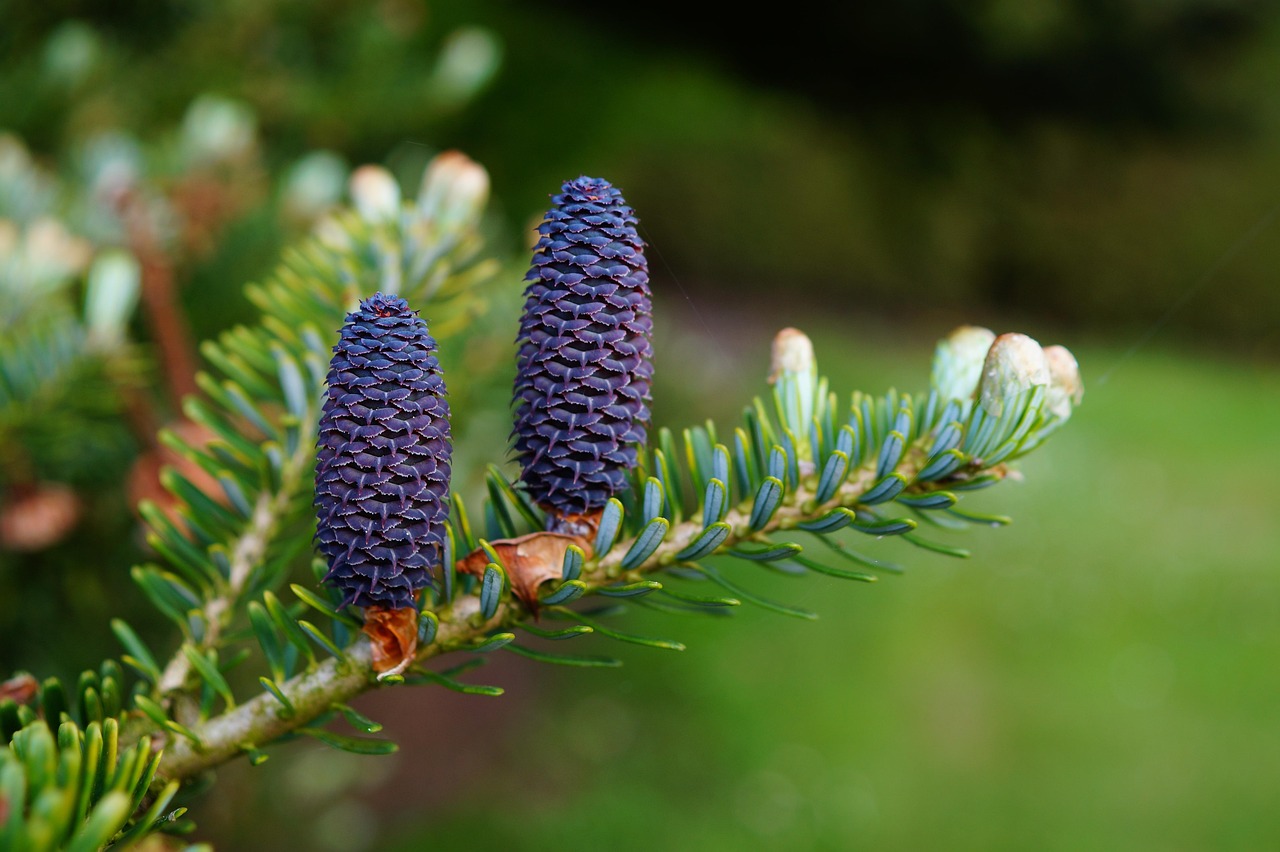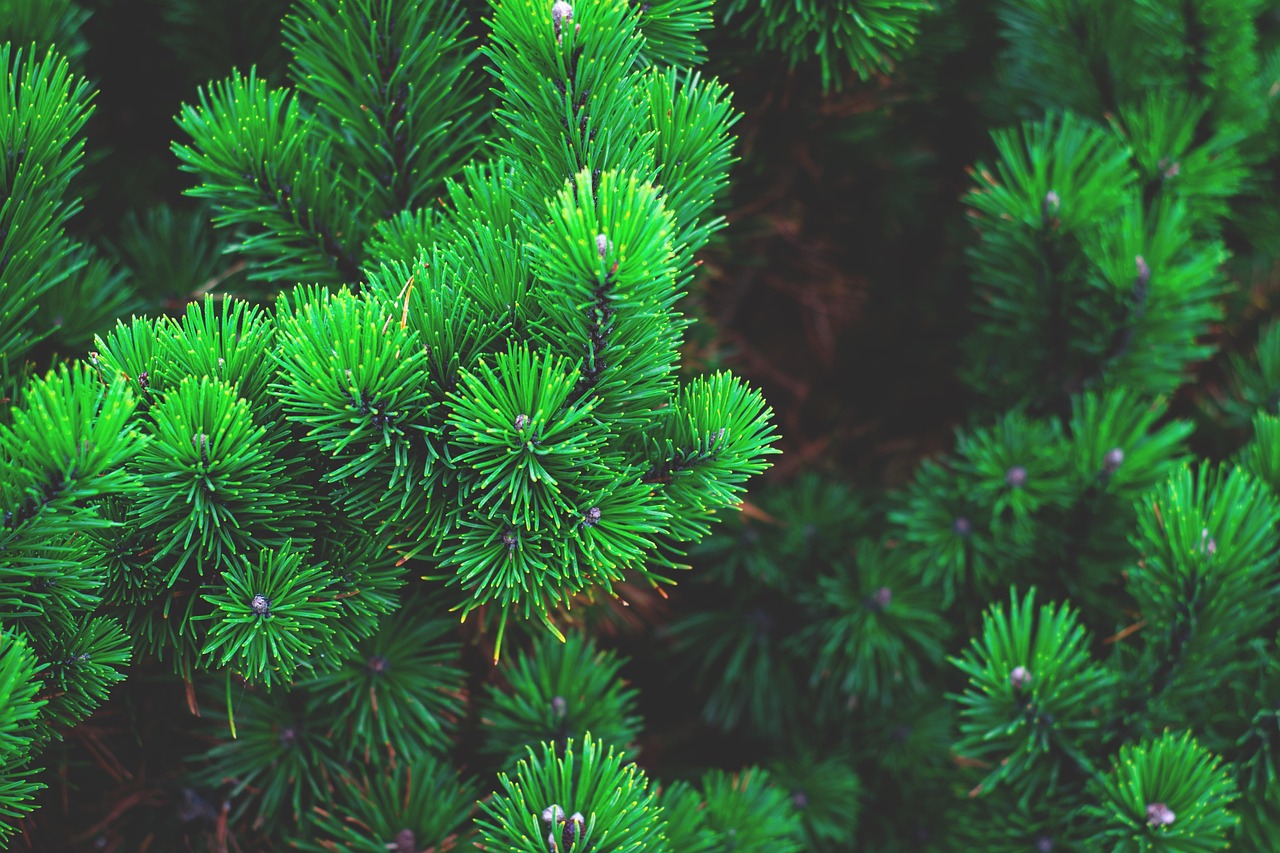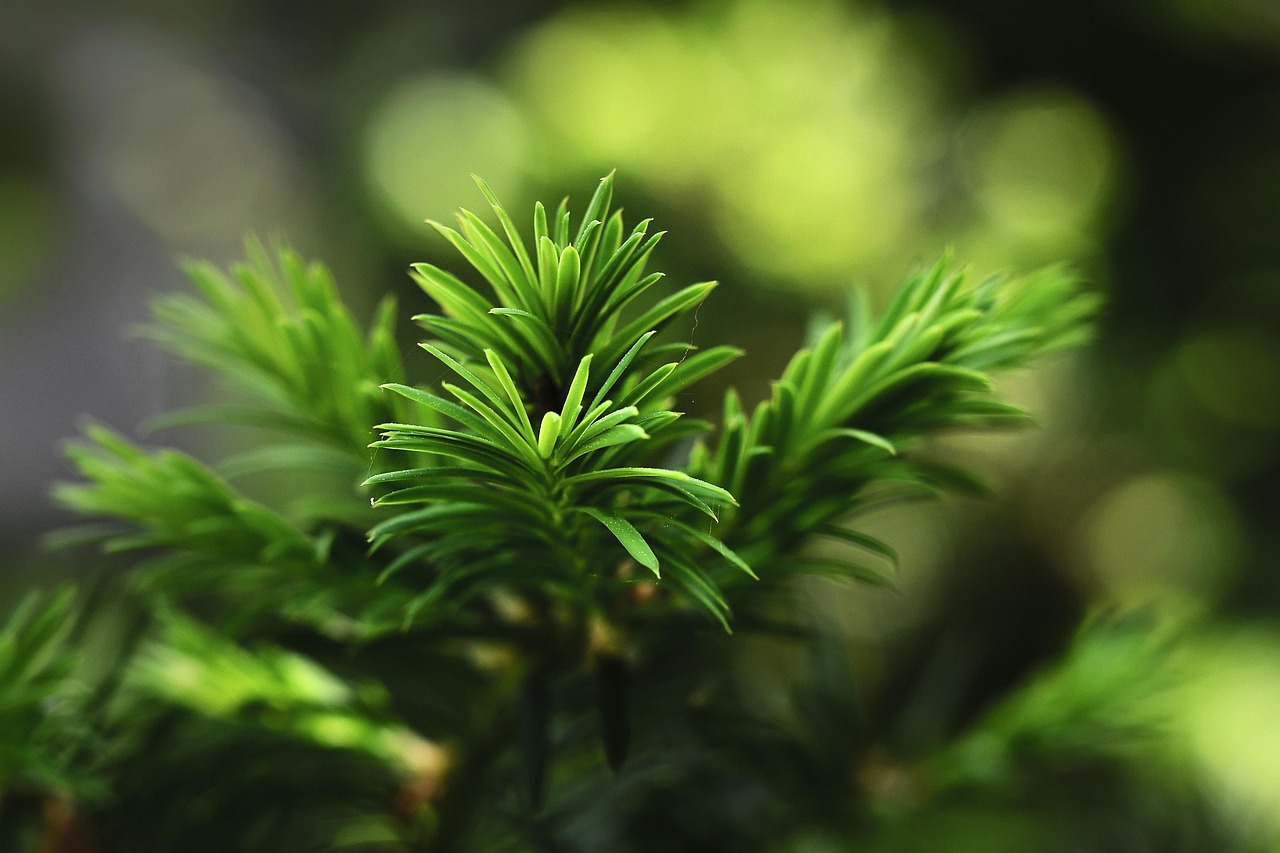Pruning evergreen trees is essential for maintaining their health and beauty. Proper pruning techniques promote growth, enhance shape, and prevent disease. Regular maintenance ensures these trees thrive throughout the seasons, providing year-round visual interest.
Evergreen trees are a popular choice for landscaping due to their lush foliage and year-round greenery. Unlike deciduous trees, which lose their leaves in the fall, evergreens retain their foliage, making them a staple in many gardens and yards. However, even though they are hardy, evergreen trees require proper care to maintain their beauty and health. Pruning is one of the most effective ways to achieve this.

Understanding the right time and techniques for pruning can significantly influence the growth and appearance of your evergreen trees. Regular pruning helps to remove dead or diseased branches, encourages new growth, and maintains a desirable shape. It also allows light to penetrate the tree’s canopy, promoting healthy foliage development.
When to Prune Evergreen Trees
The timing of your pruning efforts is crucial. Pruning at the wrong time can harm your evergreen trees or inhibit their growth. Here are some guidelines on when to prune:
- Late winter to early spring is often the best time for pruning most evergreen species. This timing allows trees to heal before the growing season.
- Avoid pruning during late summer or fall. Doing so can expose fresh cuts to winter weather, which can damage the tree.
- Always prune just before new growth begins. This practice encourages vigorous growth in the spring.
Some specific evergreen types may have unique pruning needs. For example, conifers like pines and spruces should be pruned differently than broadleaf evergreens such as hollies or boxwoods. Understanding these differences can help ensure that your pruning efforts yield the best results.

Essential Pruning Techniques
Adopting the correct pruning techniques is vital for ensuring that your evergreen trees remain healthy and beautiful. Here are some essential techniques to keep in mind:
Thinning
Thinning involves selectively removing branches to improve light penetration and air circulation within the tree. This technique helps reduce overcrowding of branches and can prevent disease by allowing for better airflow.
Heading Back
Heading back is cutting back a branch to a bud or lateral branch. This technique encourages branching and can help maintain a compact shape. It is commonly used on young trees or when shaping older trees.

Cleaning
Cleaning involves removing dead, damaged, or diseased branches. This practice is vital for maintaining the health of your tree, as it prevents the spread of disease and promotes overall vitality.
Tools Needed for Pruning
To achieve successful pruning results, having the right tools is essential. Here is a list of tools commonly used for pruning evergreen trees:
- Hand Pruners: Ideal for small branches, hand pruners are essential for precision cuts.
- Loppers: These are suitable for cutting larger branches that hand pruners cannot handle.
- Pruning Saw: A pruning saw is ideal for thick branches that require more power.
- Safety Gear: Always wear gloves and eye protection while pruning to ensure safety.
Common Mistakes to Avoid
Even experienced gardeners can make mistakes when pruning evergreen trees. Awareness of common pitfalls can help gardeners achieve better results:

- Avoid excessive pruning, which can shock the tree and lead to poor growth.
- Do not leave long stubs after cutting branches; this can lead to decay and disease.
- Steer clear of using dull tools, as they can make jagged cuts that harm the tree.
In conclusion, taking the time to prune evergreen trees properly can significantly enhance their beauty and health throughout the year. By knowing when to prune, employing the right techniques, using appropriate tools, and avoiding common mistakes, you can ensure that your evergreens remain vibrant additions to your landscape.
Understanding Different Types of Evergreen Trees
Before diving deeper into pruning techniques, it’s essential to understand the various types of evergreen trees. Each type has unique characteristics and growth patterns, influencing how and when they should be pruned. The main categories of evergreen trees include:
- Conifers: These are cone-bearing trees, such as pines, spruces, and firs. They typically have needle-like leaves and can vary significantly in size and shape.
- Broadleaf Evergreens: These trees, like holly and boxwood, have broad leaves and retain them year-round. They often require different pruning techniques than conifers.
- Deciduous Conifers: Some conifers, like larches, lose their needles in the fall. However, they are classified as evergreens during their growing season.
Pruning Conifers
Conifers require specific pruning techniques to maintain their form and health. Here are some tips for effectively pruning coniferous evergreen trees:
- Understand Growth Patterns: Conifers grow differently than broadleaf trees. They expand in length and width but do not typically produce new branches from old wood. Thus, it is crucial to prune them wisely.
- Use the Right Timing: Prune conifers in late winter or early spring before new growth begins. This timing will help encourage healthier growth.
- Avoid Topping: Topping conifers can lead to unsightly growth patterns. Always aim to prune back to a lateral branch or bud rather than cutting straight across the top.
Pruning Broadleaf Evergreens
Broadleaf evergreens, such as boxwoods and hollies, have different needs compared to conifers. Here are some techniques for pruning them effectively:
- Focus on Shape: Use heading cuts to shape broadleaf evergreens, maintaining their natural form while encouraging bushy growth.
- Timing is Key: Late spring is often ideal for pruning broadleaf evergreens after their flowering period.
- Regular Maintenance: Conduct light pruning regularly to maintain shape and remove any dead or damaged wood.
The Importance of Proper Pruning Techniques
Pruning isn’t just about aesthetics; it plays a crucial role in the overall health of evergreen trees. Here are several important reasons why proper pruning is essential:
- Encourages Healthy Growth: Pruning removes old or damaged branches that may hinder new growth. This encourages the tree to channel energy into healthier parts.
- Improves Air Circulation: Well-pruned trees allow better air circulation, reducing the risk of disease caused by moisture buildup.
- Enhances Light Exposure: By removing excess foliage, you allow sunlight to reach more parts of the tree, promoting even growth.
Signs Your Evergreen Trees Need Pruning
Recognizing when your evergreen trees need pruning is vital. Here are some signs to look for:
- Dead or Damaged Branches: If you notice branches that are dead or have been damaged by weather or pests, they should be pruned immediately.
- Overcrowded Foliage: When branches are overcrowded, they can block light and air from reaching inner sections of the tree.
- Pest Infestation: If you see signs of pests or disease on certain branches, it is best to prune those areas to prevent further spread.
Seasonal Care After Pruning
Your work does not end once you’ve pruned your evergreen trees. Seasonal care is essential for ensuring that your trees remain healthy throughout the year. Here are some essential tips for seasonal care following pruning:
- Watering: Ensure your trees receive adequate water after pruning. This helps support new growth during the upcoming growing season.
- Fertilization: Apply a slow-release fertilizer in early spring to provide essential nutrients for healthy growth.
- Pest Control: Monitor for pests regularly, especially after pruning, as fresh cuts can attract insects.
Nurturing Your Evergreen Trees Year-Round
A comprehensive approach to caring for your evergreen trees will yield the best results. This includes regular inspections, understanding each tree’s specific needs, and adapting care practices according to seasonal changes.
In summary, understanding the different types of evergreen trees, recognizing signs that they need pruning, and following proper techniques will help you maintain their beauty and health throughout the year. Regular maintenance and care will ensure that your evergreen trees continue to thrive and enhance your landscape.
Seasonal Pruning Considerations
The timing of pruning can significantly impact the health and appearance of evergreen trees. Understanding seasonal changes and how they affect tree growth is crucial for effective pruning. Here are some considerations for pruning during different seasons:
Spring Pruning
Spring is a vital time for pruning evergreen trees. As trees begin to emerge from dormancy, proper pruning can encourage healthy growth. Here are some key points to consider:
- Timing: Prune in late winter or early spring before new growth starts. This allows the tree to heal quickly as it enters its active growing season.
- Focus on Shape: Spring is ideal for shaping trees. Remove any dead or diseased branches, and trim back excessive growth to maintain a pleasing form.
- Encourage New Growth: By pruning in spring, you create space for new shoots and foliage, enhancing the tree’s overall vigor.
Summer Pruning
Summer offers a unique opportunity for pruning evergreen trees. This period allows gardeners to assess tree growth and make adjustments as needed:
- Light Pruning: Summer is suitable for light pruning to control size and shape without stressing the tree.
- Removing Suckers: If you notice any suckers (unwanted shoots) at the base or along branches, summer is the perfect time to remove them.
- Pest Inspection: During summer, inspect for pests or disease. Any affected branches should be pruned immediately to prevent spreading.
Fall Pruning
Fall is generally not recommended for heavy pruning of evergreen trees due to potential stress before winter. However, there are some considerations:
- Avoid Major Cuts: Do not perform significant pruning in fall. Heavy cuts can expose the tree to winter damage.
- Clean Up Debris: Trim away any dead or diseased branches that could harbor pests over winter.
- Prepare for Winter: Light shaping may be done, but ensure that you are not leaving wounds that could be susceptible to cold weather.
Winter Pruning
Winter is often considered the best time for pruning certain types of evergreen trees. Many gardeners take advantage of the dormant season for various reasons:
- Visibility: With no leaves on deciduous trees, it’s easier to see the structure of your evergreens and identify which branches need attention.
- Reduced Stress: Pruning during dormancy minimizes stress on the tree, allowing it to recover effectively as it wakes up in spring.
- Preventing Damage: Removing weak or damaged branches before spring helps prevent breakage from snow and ice.
Special Considerations for Specific Evergreen Varieties
Not all evergreen trees require the same pruning approach. Each species has its unique characteristics that dictate pruning techniques. Here are some specific considerations for popular evergreen varieties:
Pines
Pines are unique among evergreens and have specific needs when it comes to pruning:
- Candle Pruning: In spring, pinch off the new growth (candles) to encourage bushier growth and maintain shape.
- Avoid Heavy Cuts: Pines do not regenerate well from old wood; avoid cutting back into bare branches.
Spruces
Spruces require careful handling during pruning:
- Thin Branches: Thin out crowded areas by selectively removing branches at their base to improve airflow.
- Avoid Topping: Similar to pines, topping spruces can lead to poor growth patterns.
Cypress
Cypress trees often need different approaches for maintaining their health:
- Shearing: For formal hedges, light shearing can keep cypress trees looking neat and tidy.
- Remove Dead Wood: Regularly inspect and prune away any dead wood, especially in mature cypress trees.
The Role of Mulching in Evergreen Care
After pruning, mulching can play a significant role in maintaining the health of your evergreen trees. Here are several benefits of using mulch:
- Moisture Retention: Mulch helps retain moisture in the soil, which is vital after pruning when trees need extra hydration.
- Weed Suppression: A layer of mulch can prevent weed growth, reducing competition for nutrients and water.
- Temperature Regulation: Mulch acts as an insulator for tree roots, helping regulate soil temperature throughout the seasons.
Select organic mulch materials such as wood chips or bark, which will also improve soil quality as they decompose over time. Applying a layer of mulch around your evergreen trees after pruning can greatly enhance their overall health and vitality.
Caring for your evergreen trees involves a comprehensive understanding of their needs throughout different seasons. By tailoring your approach based on specific tree types and seasonal considerations, you can ensure that your evergreens remain healthy and beautiful year-round.
In addition to pruning and mulching, there are several other practices that can enhance the health and beauty of your evergreen trees throughout the year. These practices include proper watering techniques, pest management, and understanding the importance of fertilization.
Watering Practices for Evergreen Trees
Effective watering is crucial for the health of evergreen trees. Here are some essential watering tips:
- Deep Watering: Evergreen trees typically have deep root systems. Watering deeply but infrequently encourages roots to grow downward, making them more resilient during dry periods.
- Check Soil Moisture: Always check the moisture level of the soil before watering. Overwatering can lead to root rot, while underwatering can stress the tree.
- Water During Drought: If you experience a dry spell, provide supplemental watering to help your evergreens survive. Young trees particularly benefit from consistent moisture.
Pest Management Strategies
Pest problems can quickly escalate if not addressed properly. Implementing a proactive pest management strategy is beneficial. Here are some approaches:
- Regular Inspections: Conduct routine inspections of your evergreen trees for signs of pests such as aphids, spider mites, or scale. Early detection is key to effective management.
- Natural Predators: Introduce beneficial insects like ladybugs and lacewings, which feed on common pests. This natural approach helps maintain a balanced ecosystem in your garden.
- Insecticidal Soaps: For minor infestations, insecticidal soaps can be an effective way to control pests without harming beneficial insects.
Fertilization Considerations
Proper fertilization can significantly impact the health of your evergreen trees. Here’s how to effectively fertilize:
- Choose the Right Fertilizer: Select a slow-release fertilizer specifically formulated for evergreen trees. This ensures that nutrients are available over time.
- Timing: Fertilize in early spring just as new growth begins. Avoid fertilizing in late summer or fall, as this can encourage new growth that may not harden off before winter.
- Application Method: Apply fertilizer evenly around the root zone, avoiding direct contact with the trunk to prevent burning. Water thoroughly after application to help the fertilizer penetrate the soil.
Creating an Optimal Environment
Creating a suitable environment for your evergreen trees can help them thrive. Here are some additional tips for ensuring optimal conditions:
- Select Appropriate Locations: Plant your evergreen trees in locations that provide adequate sunlight and protection from harsh winds.
- Avoid Compact Soil: Ensure the soil is well-draining and aerated. Compacted soil can hinder root growth and limit water absorption.
- Mulch Properly: As mentioned earlier, using organic mulch not only retains moisture but also gradually improves soil quality as it decomposes.
Final Thoughts
Caring for evergreen trees involves a multifaceted approach that combines pruning, watering, pest management, and fertilization. By understanding the specific needs of different evergreen species and adapting your care practices accordingly, you can ensure vibrant and healthy trees throughout the seasons.
The key takeaways include regular inspections, timely pruning, appropriate watering techniques, and strategic fertilization. Each of these elements plays a vital role in maintaining your evergreens’ health and beauty. With diligence and care, your evergreen trees will not only survive but thrive, providing year-round beauty and enhancing your landscape for years to come.
Ultimately, the effort you put into caring for your evergreen trees will be reflected in their lush foliage, robust growth, and overall vitality. By implementing these tips and strategies, you can create a stunning environment that highlights the natural beauty of these magnificent trees.
Your passion and dedication to maintaining these living treasures will reward you with a landscape that is both beautiful and full of life.
